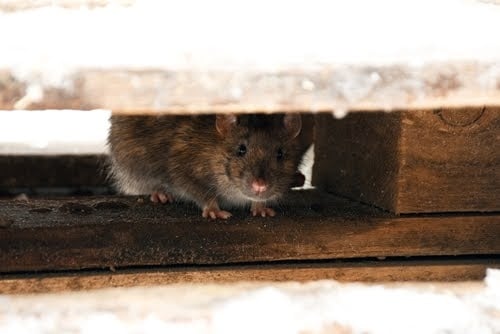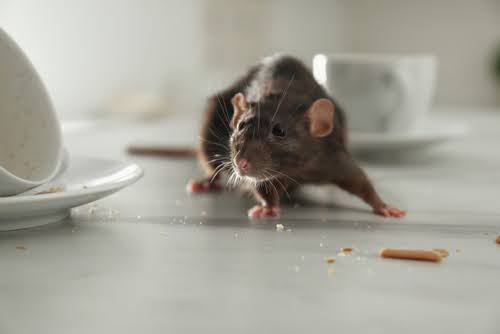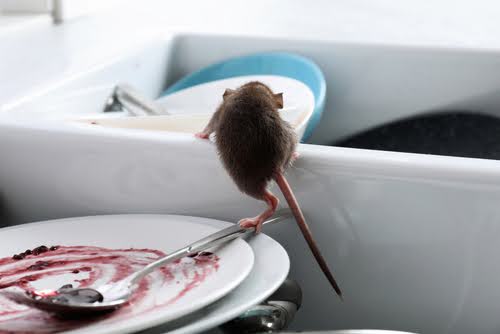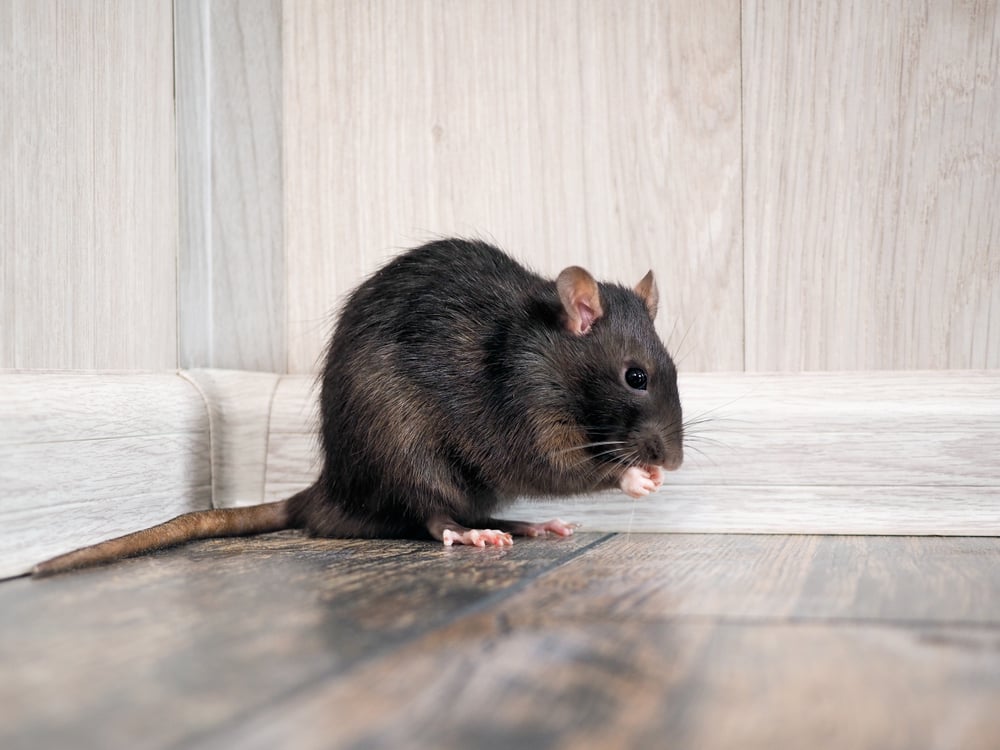As temperatures plummet and food becomes scarce in the winter months, rats must devise strategies to stay warm and survive. Come spring, rat populations are as robust as ever. How do they do it? In this blog, we’ll cover winter rat behavior and go over four ways rats navigate and survive winter’s harsh conditions.
Do Rats Hibernate?
Contrary to popular belief, rats do not hibernate. Even during the cold winter months, they remain active, seeking food and warmth. Homeowners should regularly inspect their homes for entry points, signs of infestation like droppings and gnaw marks, and implement measures to keep rats away (which we will cover later in this blog).

How Do Rats Survive the Winter?
1. Stockpiling
Between the tailend of summer to autumn, rats become more assertive in their quest for sustenance. They shift from being opportunistic eaters to actively searching for additional food supplies. Rats can survive the winter thanks to their ability to consume nearly anything, ensuring they always have options.
What Do Rats Eat?
Rats will typically transport their haul to a readily accessible area for later use. These reserves are crucial for their survival and are often integrated into their nests for their young. Common items in a rats cache include:
- Seeds
- Pet Food
- Paper
- Nuts
- Compost Waste
- Fabric

2. Burrowing: Where Do Rats Go in the Winter?
Rats utilize their excellent digging skills to stay warm in the winter. They typically seek structures like rocks, walls, or fences to dig a burrow nearby. If you’re dealing with a rat infestation, you may notice small rat dwellings near air conditioning units or electrical boxes.
Rats are known to leave their burrows in search of food or more suitable shelter. They are capable of burrowing through open ground or snow, though they prefer not to unless necessary. Rats will always choose your home for shelter over burrowing outside if given the opportunity. This is why identifying potential entry points (like chewing through insulation) where rats could gain access to your house is crucial for preventing infestations.
3. Nesting
Inside, rats build their nests by gathering materials to a secluded spot. For rats, the location of their nest is more important than the materials used. They seek out warm, dark places away from humans and predators, like walls, attics, crawl spaces.

4. How Rats Survive the Winter: Creativity
Rats survive the winter through ingenuity. The pest control experts at Plunkett’s have observed rats burrowing under floorboards, chewing through cables, climbing downspouts, and even squeezing under doors. Their adaptability is key in their winter survival.
Preventing a Winter Rat infestation
Paying attention to detail is paramount in keeping rats at bay. Here are a few tips on preventing a rat infestation:
- Keep food in designated areas
- Cover and remove paper clutter and trash regularly
- Clean up crumbs quickly
- Fix leaky pipes and keep your home or building dry
- Put weather strips on doors and windows
- Repair and fill small holes (½” or larger), cracks, and crevices
- Cover vent pipes with hardware cloth secured with wire
- Replace vegetation with gravel around at least an 18 inch perimeter of the building

Call Plunkett’s to Keep Rats Out For Good
The most effective way to deal with a rat infestation during the winter is to seek professional help. Despite your best efforts, rats in your home can sometimes be inevitable. That’s where we come in. Our pest control services are designed to eliminate rats and prevent future infestations. Contact us today to ensure your home remains rat-free all year long.









